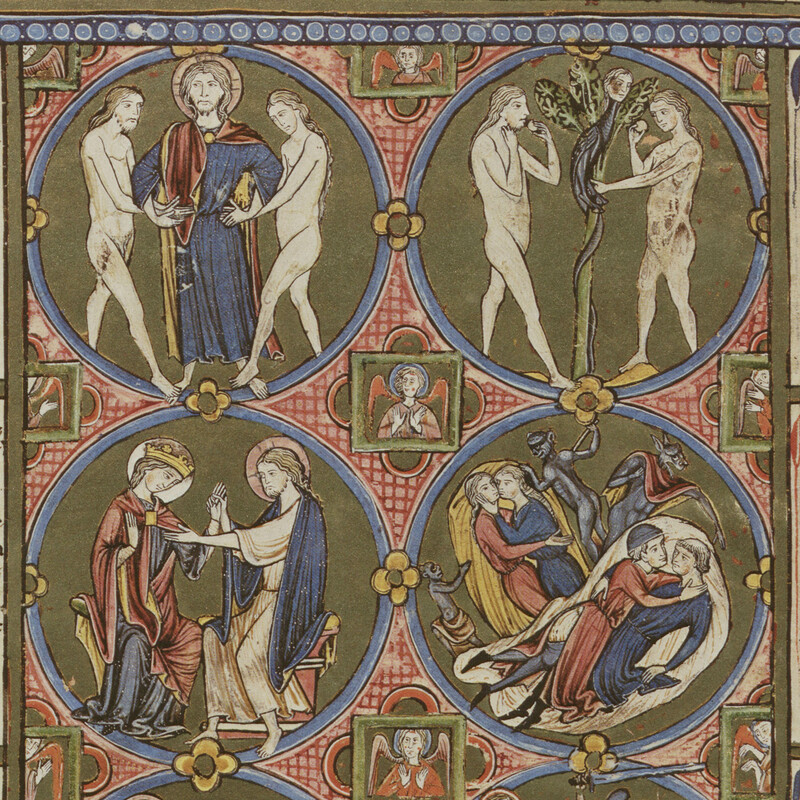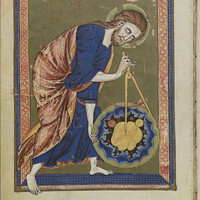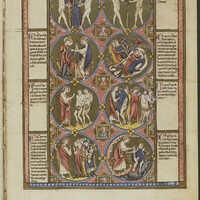Bible moralisée
Date:
1225–49
Location or Findspot (Modern-Day Country):
France
Medium:
Parchment
Dimensions:
34.4 × 26 cm
Description:
Bible moralisée, French for moralized Bible, is a name given to a type of medieval picture Bible that began to appear in the thirteenth century. The focus of such books, which did not include the full text of the Bible, was to contrast different images (often pairings of Old and New Testament stories) as a means of imparting some moral teaching. The stories are taken out of their original contexts and often manipulated to serve specific ends. Bibles moralisées were designed for private pedagogical use, for example as teaching materials for French kings. In the Bible moralisée reproduced here, the standard layout has eight roundels arranged in two columns of four each. These roundels have associated legends in the the narrow columns to the left and right.
A page focusing on the Fall of Man presents moralized views of gender and sexuality. In the top left medallion, God joins Adam and Eve together and the legend describes the scene as a marriage. Set in contrast is the representation of the Fall to the right, with the serpent between Adam and Eve instead of God, and the roundel below, in which Jesus and Ecclesia (the personification of the Church) are joined in a holy union. Physical gestures express messages about the proper behavior of women: Eve is overly dominant, reaching forward to grasp at the Tree of Knowledge. Ecclesia, in contrast, is more passive, allowing Jesus to grasp at her hand. To the right of Christ and Ecclesia is a roundel in which two same-sex couplings, one of women and one of men, are meant to be seen as unholy unions spurred on by demons. Other Bible moralisées condemning "inappropriate" queer unions introduce additional layers to the identities of the transgressors, for example depicting them as clerics and laymen.
A page focusing on the Fall of Man presents moralized views of gender and sexuality. In the top left medallion, God joins Adam and Eve together and the legend describes the scene as a marriage. Set in contrast is the representation of the Fall to the right, with the serpent between Adam and Eve instead of God, and the roundel below, in which Jesus and Ecclesia (the personification of the Church) are joined in a holy union. Physical gestures express messages about the proper behavior of women: Eve is overly dominant, reaching forward to grasp at the Tree of Knowledge. Ecclesia, in contrast, is more passive, allowing Jesus to grasp at her hand. To the right of Christ and Ecclesia is a roundel in which two same-sex couplings, one of women and one of men, are meant to be seen as unholy unions spurred on by demons. Other Bible moralisées condemning "inappropriate" queer unions introduce additional layers to the identities of the transgressors, for example depicting them as clerics and laymen.
Relevant Textbook Chapter(s):
8
Repository and Online Resources:
• See the fully digitized manuscript on the website of the Österreichische Nationalbibliothek, Vienna.



